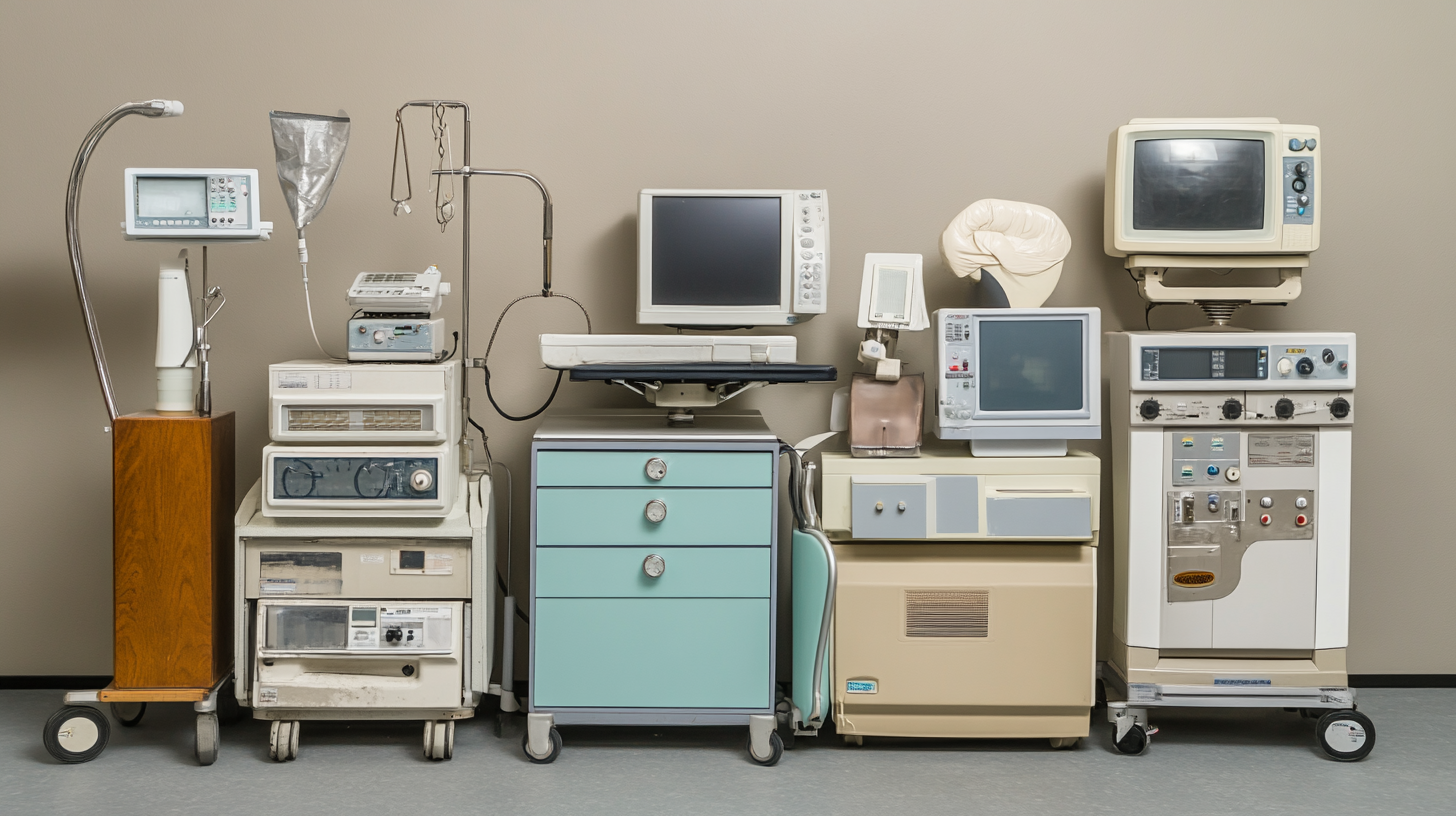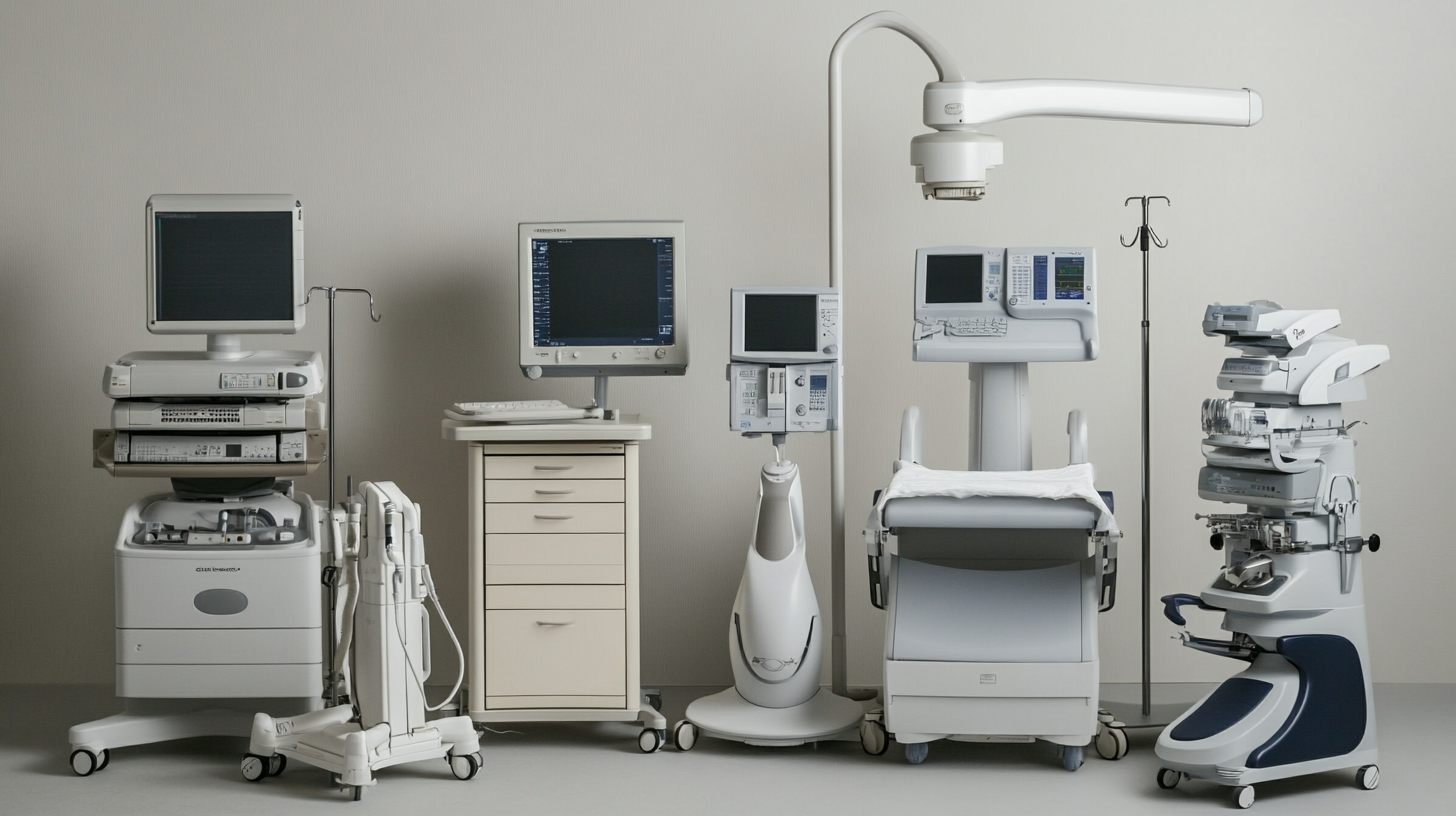Your Comprehensive Guide to Purchasing Quality Used Medical Equipment
In the rapidly evolving healthcare sector, the demand for cost-effective and reliable medical solutions has led to a significant increase in the purchasing of Used Medical Equipment. According to a recent report by Grand View Research, the global market for pre-owned medical devices is projected to reach approximately $12 billion by 2025, a trend driven by the rising need for budget-friendly alternatives amid escalating healthcare costs. Furthermore, a survey conducted by HealthLeaders Media revealed that over 60% of healthcare providers are considering or currently using refurbished equipment to enhance their operational efficiency without compromising on quality. This comprehensive guide aims to provide valuable insights into the critical factors to consider when purchasing Used Medical Equipment, ensuring that healthcare facilities can make informed decisions that benefit both their budget and patient care.

Understanding the Benefits of Buying Used Medical Equipment
Purchasing used medical equipment has become an increasingly attractive option for healthcare providers, particularly in light of rising costs and budget constraints. According to a report by the Global Industry Analysts, the market for refurbished medical equipment is expected to reach $20 billion by 2026, showcasing a growing trend among hospitals and clinics to seek cost-effective solutions. The benefits of buying used medical equipment include significant savings; facilities can save upwards of 50-70% compared to purchasing new devices. This translates into better allocation of budget towards patient care and facility improvements.
Moreover, quality assurance is a critical aspect when considering used medical equipment. Many reputable suppliers offer certified refurbished units, ensuring that these devices meet stringent safety and performance standards. As highlighted by recent studies published in the Journal of Medical Device Research, refurbished equipment can perform nearly as well as new equipment, contributing to similar positive patient outcomes. With appropriate maintenance and inspections, used medical devices can provide reliability and longevity, making them a wise investment for healthcare institutions focused on sustainability and efficiency.
Your Comprehensive Guide to Purchasing Quality Used Medical Equipment
This chart illustrates the benefits of purchasing used medical equipment, highlighting cost savings, availability, and environmental impact.
Key Factors to Consider When Assessing Equipment Quality
When it comes to purchasing quality used medical equipment, understanding key factors that influence the assessment of equipment quality is crucial. A recent report by the Global Medical Device Market reveals that the used medical equipment market is estimated to grow significantly, driven by hospitals seeking cost-effective solutions. Therefore, having a checklist to evaluate the equipment can save time and resources.
One key factor to consider is the equipment's maintenance history. According to data from the FDA, consistent maintenance significantly prolongs the lifespan and reliability of medical devices. When assessing used equipment, request documentation of all maintenance logs or service records. This will help gauge how well the equipment has been cared for and whether it has been subjected to any major repairs.
Another essential consideration is the device’s age and technology. The healthcare market is evolving, and newer models often come with advanced features. As per a study in the Journal of Medical Devices, outdated equipment may lead to inefficiencies and even increased risk of errors. Always inquire about the age of the equipment and its capacity to integrate with modern technology.
**Tips:**
- Verify the equipment’s compliance with safety regulations and certifications.
- Consider purchasing from reputable dealers who offer warranties or return policies to ensure peace of mind with your investment.

Where to Find Reputable Suppliers for Used Medical Equipment
When it comes to purchasing quality used medical equipment, finding reputable suppliers is critical to ensure both safety and effectiveness. According to a report by the Imaging Economics, about 70% of healthcare facilities consider sourcing used medical equipment to be a cost-effective alternative to new purchases, especially as budget constraints intensify. Suppliers that have established reputations in the industry often provide rigorous quality assurance processes, which include refurbishing equipment and comprehensive warranties. This not only enhances the longevity of the devices but also provides buyers with peace of mind regarding their functionality.
To locate trustworthy suppliers, one effective approach is attending medical trade shows and expos where certified vendors showcase their products. Reports from the Medical Device Manufacturers Association underline that networking at these events can lead to valuable relationships with reliable suppliers who are committed to maintaining high standards of safety and efficacy. Additionally, leveraging online platforms that feature vendor reviews can help healthcare professionals make informed decisions, as 80% of medical purchasing managers emphasize the importance of seller reputation in their buying process. Investing time to research and connect with reputable suppliers ultimately ensures that facilities receive quality equipment that meets regulatory standards.
Your Comprehensive Guide to Purchasing Quality Used Medical Equipment
| Equipment Type | Reputable Suppliers | Warranty Offered | Price Range (USD) | Customer Reviews |
|---|---|---|---|---|
| Ultrasound Machine | Medical Equipment Inc. | 1 Year | $15,000 - $25,000 | ★★★★☆ |
| MRI Machine | Radiology Supplies LLC | 2 Years | $150,000 - $300,000 | ★★★★★ |
| X-Ray Machine | TechMed Gear | 6 Months | $30,000 - $60,000 | ★★★★☆ |
| CT Scanner | Diagnostic Equipment Co. | 1 Year | $100,000 - $250,000 | ★★★☆☆ |
| Patient Monitor | Healthcare Solutions | 3 Years | $2,000 - $5,000 | ★★★★☆ |
Tips for Negotiating Prices and Securing Good Deals
When it comes to purchasing quality used medical equipment, negotiating prices effectively can make a significant difference in your overall spending. Start by doing thorough research on the equipment you need. Understanding the average market price for the specific models you’re considering will empower you during negotiations. This knowledge allows you to identify fair offers and avoid overpaying. Additionally, consider reaching out to multiple sellers. This not only provides you with a wider selection but also gives you leverage in discussing prices. Highlighting alternatives can encourage sellers to offer better deals to secure your business.
Once you’ve identified potential equipment and sellers, be confident in your negotiation strategy. Communicate your budget clearly, and do not shy away from making an initial offer that is lower than what you are willing to pay. Sellers often anticipate negotiations, and by starting lower, you open a dialogue that can lead to a fair price. Remember, building rapport with the seller can work in your favor. Express genuine interest in the equipment and ensure them that you appreciate the quality they are offering. This can lead to more favorable terms and possibly even added benefits, such as warranties or maintenance services.

Essential Maintenance and Support for Used Medical Equipment After Purchase
Purchasing used medical equipment can be a cost-effective solution for healthcare providers, but ensuring the longevity and reliability of these tools is paramount post-purchase. Essential maintenance and support should be prioritized to keep devices functioning at their best. Just as the Army has recognized the need for trained medical maintenance experts to maintain fielded equipment, healthcare facilities must also invest in professional training for their staff. By equipping personnel with the skills to conduct regular inspections and perform necessary repairs, facilities can extend the lifespan of their medical devices and ensure patient safety.
In addition to staff training, developing a comprehensive maintenance plan is critical. This plan should outline routine check-ups, servicing schedules, and immediate response protocols for unexpected equipment failures. The Army’s emphasis on unit-level Soldier support highlights the importance of hands-on assistance; similarly, medical practices should consider establishing a dedicated support team for their used equipment. By fostering a culture of proactive maintenance and responsive support, healthcare providers can maximize the value of their investments in used medical equipment, ensuring that they remain effective in delivering quality patient care.
Your Comprehensive Guide to Purchasing Quality Used Medical Equipment
This pie chart illustrates the key considerations when purchasing quality used medical equipment. It emphasizes the importance of quality assurance, maintenance support, cost savings, and user training, providing insights into what to prioritize post-purchase.
